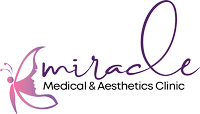Acne scars are permanent marks or indentations on the skin that are left behind after acne has healed. These scars can appear on the face, neck, chest, back, and other parts of the body. They can range in appearance from shallow, surface-level marks to deep, pitted scars.
Acne scars are caused by the body’s natural healing process in response to acne inflammation. When acne develops, the body produces collagen fibers to repair the damaged skin. In some cases, the body produces too much collagen, leading to raised scars. In other cases, the body produces too little collagen, leading to depressed scars.
The type of acne scars that develop can depend on various factors, such as the severity of the acne, the individual’s skin type, and the way the acne was treated. Some common types of acne scars include:
- Ice pick scars: deep and narrow scars that look like small puncture marks
- Boxcar scars: broad, shallow scars with sharply defined edges
- Rolling scars: wide, shallow scars with a smooth, sloping edge
Other factors that can increase the likelihood of developing acne scars include picking at acne lesions, not treating acne early enough, and having a family history of acne scarring.

What are Acne Scars
Acne scars are permanent marks or indentations on the skin that are left behind after acne has healed. These scars can appear on the face, neck, chest, back, and other parts of the body. They can range in appearance from shallow, surface-level marks to deep, pitted scars.
Acne scars are caused by the body’s natural healing process in response to acne inflammation. When acne develops, the body produces collagen fibers to repair the damaged skin. In some cases, the body produces too much collagen, leading to raised scars. In other cases, the body produces too little collagen, leading to depressed scars.
The type of acne scars that develop can depend on various factors, such as the severity of the acne, the individual’s skin type, and the way the acne was treated. Some common types of acne scars include:
- Ice pick scars: deep and narrow scars that look like small puncture marks
- Boxcar scars: broad, shallow scars with sharply defined edges
- Rolling scars: wide, shallow scars with a smooth, sloping edge
Other factors that can increase the likelihood of developing acne scars include picking at acne lesions, not treating acne early enough, and having a family history of acne scarring.
What Causes Acne Scarring
Acne scarring is caused by the body’s natural healing process in response to acne inflammation. When acne develops, the body produces collagen fibers to repair the damaged skin. However, the collagen production process can be disrupted and lead to scarring.
The severity of the acne and the individual’s skin type can influence the likelihood of scarring. People with severe acne, cystic acne, or nodular acne are more likely to develop scars than those with milder forms of acne. Additionally, people with oily skin or who have a family history of acne scarring may be more prone to developing scars.
The following factors can also contribute to the development of acne scars:
- Picking or squeezing acne lesions: When acne lesions are picked or squeezed, the skin can be damaged and lead to scarring.
- Delayed treatment: The longer acne goes untreated, the greater the risk of scarring.
- Inflammation: Inflamed acne lesions can lead to more significant scarring than non-inflamed lesions.
- Genetics: Some people may be genetically predisposed to developing acne scars.
- Age: Acne scars may be more prevalent in older individuals because skin loses collagen and elasticity as it ages.
- Sun exposure: Exposure to sunlight can make acne scars more visible because it can darken the skin and make the scars more noticeable.

